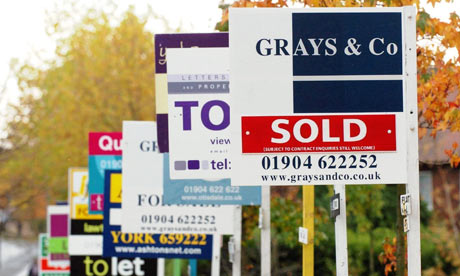Home prices slipped in nearly every major metropolitan area in November, with a few cities hitting their lowest levels since prices peaked about four years ago, according to a closely watched index released Tuesday.
From October to November, prices fell in 19 of the 20 metro areas tracked by the Standard & Poor’s/Case-Shiller index, widely considered a gauge of the housing market’s health. The only exception was San Diego, where prices were basically unchanged.
Only four areas posted year-over-year gains in November, including Los Angeles, San Diego, San Francisco and the Washington region. But in the aggregate, prices dipped 1.6 percent in November from the same time a year earlier, falling in 16 cities.
The eight cities that hit their lowest annual levels since the housing bust started were Atlanta, Charlotte, Detroit, Las Vegas, Miami, Portland, Ore., Seattle and Tampa.
The 20-city index is now about 3 percent above April 2009 levels, “suggesting that a double dip could be confirmed before spring,” said David Blitzer, the index committee’s chairman.
This “double dip” in real estate represents one of the worst fears of housing analysts and is developing just as it appeared that the overall economy was recovering. For now, many economists expect prices to keep slipping at least through the first half of the year, dragged down by the nation’s large volume of foreclosures and high unemployment rate.

Home Prices Still Falling in Major Cities
Home prices slipped in nearly every major metropolitan area in November, with a few cities hitting their lowest levels since prices peaked about four years ago, according to a closely watched index released Tuesday.
From October to November, prices fell in 19 of the 20 metro areas tracked by the Standard & Poor’s/Case-Shiller index, widely considered a gauge of the housing market’s health. The only exception was San Diego, where prices were basically unchanged.
Only four areas posted year-over-year gains in November, including Los Angeles, San Diego, San Francisco and the Washington region. But in the aggregate, prices dipped 1.6 percent in November from the same time a year earlier, falling in 16 cities.
The eight cities that hit their lowest annual levels since the housing bust started were Atlanta, Charlotte, Detroit, Las Vegas, Miami, Portland, Ore., Seattle and Tampa.
The 20-city index is now about 3 percent above April 2009 levels, “suggesting that a double dip could be confirmed before spring,” said David Blitzer, the index committee’s chairman.
This “double dip” in real estate represents one of the worst fears of housing analysts and is developing just as it appeared that the overall economy was recovering. For now, many economists expect prices to keep slipping at least through the first half of the year, dragged down by the nation’s large volume of foreclosures and high unemployment rate.
The Washington region has bucked the trend because a healthy job market, particularly for high-salaried workers, buoyed demand and prices for housing. Home values climbed 3.5 percent in November from a year earlier, but they were almost unchanged from October and are well off their peak.
The Case-Shiller index measures repeat sales of single-family homes and reflects a rolling three-month average, so the November data capture transactions that closed in October and September, as well.